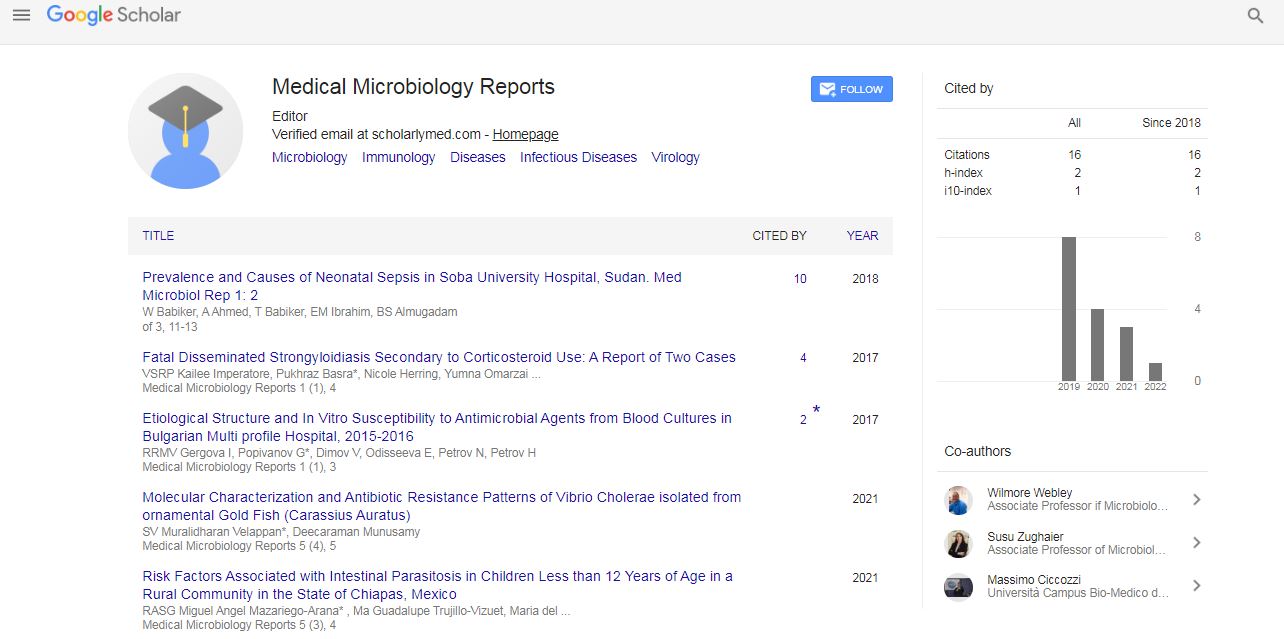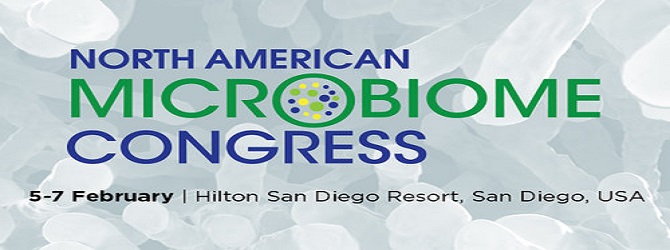Commentary, Med Microbiol Rep Vol: 7 Issue: 4
Analyzing the Spectrum of Pathogen Interactions and their Effects
Giraudeau Dinkeloo*
1Department of Evolutionary Biology, University of Toronto, Toronto, Canada
*Corresponding Author: Giraudeau Dinkeloo,
Department of Evolutionary
Biology, University of Toronto, Toronto, Canada
E-mail: giraudinke@uot.ca
Received date: 24 November, 2023, Manuscript No. MMR-24-128537;
Editor assigned date: 27 November, 2023, PreQC No. MMR-24-128537 (PQ);
Reviewed date: 11 December, 2023, QC No. MMR-24-128537;
Revised date: 18 December, 2023, Manuscript No. MMR-24-128537 (R);
Published date: 26 December, 2023, DOI: 10.4172/MMR.1000353
Citation: Dinkeloo G (2023) Analyzing the Spectrum of Pathogen Interactions and their Effects. Med Microbiol Rep 7:4.
Description
Pathogens and the hosts engage in a sophisticated and passionate embrace during their interactions. Understanding the spectrum of these interactions is essential for working out the mechanisms of infectious diseases and developing effective strategies for intervention. It delves into the diverse range of pathogen interactions, exploring their types and the consequential effects on hosts. In the complex field of host-pathogen interactions, a variety of connections take shape, from mutualistic collaborations to parasitic frameworks. Mutualistic interactions demonstrate specific instances where pathogens and hosts engage in a reciprocal alliance, both reaping benefits. Microorganisms, like those comprising the gut microbiota, form symbiotic relationships with hosts, contributing to vital functions such as digestion and immune system enhancement.
Commensal interactions, on the other hand, portray pathogens coexisting with hosts without causing harm. In parasitism, a contrasting dynamic emerges, characterized by pathogens thriving at the host's expense. Parasites draw nourishment and support from the host's resources, often leading to harm or disease. Notably, malaria parasites exemplify this, relying on the host's blood for sustenance and reproduction, causing symptoms and potential complications. Additionally, certain pathogens contain pathogenicity foci, specific genetic regions housing virulence factor genes. These foci play a pivotal role in bolstering a pathogen's ability to infect and cause disease, influencing the severity of infections and facilitating evasion of host defenses. The spectrum of pathogen interactions thus spans a continuum from mutualistic cooperation to parasitic manipulation, shaping the dynamics of host-pathogen relationships in complex ways.
Pathogen interactions exert profound effects on hosts, manifesting in various facets that dictate disease progression and long-term consequences. Disease severity and symptoms are outcomes shaped by the pathogen combination virulence and the efficacy of the host's immune response. This understanding is important for devising customized therapies aimed at mitigating disease progression. Pathogens, throughout their evolutionary cycle, employ diverse strategies to modulate the host's immune response. Some pathogens adeptly suppress the immune system, ensuring their persistence and proliferation, while others induce an exaggerated response, causing inflammation and tissue damage. Deciphering these mechanisms provides key importance for the development of vaccines and therapeutics. The dynamic interactions between pathogens and hosts drive co-evolution, influencing genetic adaptations in both entities.
The consequences of pathogen interactions extend beyond immediate infections, with chronic or latent infections persisting and leading to increased susceptibility to secondary infections or the development of chronic diseases, as evidenced by the association between certain viral infections and cancer development. Thus, pathogens and hosts undergo a complex strut that spans time frames and has an extended effect on both sides' evolution and health. A nuanced understanding of pathogen interactions allows for the development of customized therapeutics. By identifying specific virulence factors or host-pathogen interaction points, analysts can design drugs that disrupt these processes, providing more effective and precise treatments for infectious diseases. Inputs into pathogen-host dynamics are instrumental in vaccine development.
Analyzing the spectrum of pathogen interactions and their effects is essential for advancing the understanding of infectious diseases and developing effective preventive and therapeutic strategies. From mutualistic relationships to parasitic interactions, the complex movement between pathogens and hosts shapes the landscape of microbial pathogenesis. Analysts continue to reveal the complexities of these interactions, seeking to reveal the enigmas that will lead to improved diagnostics, treatments and ultimately, the prevention of infectious diseases. The ability to traverse the microbial network, the inputs gained from studying pathogen interactions pave the way for a more resilient and informed approach to global health challenges.
 Spanish
Spanish  Chinese
Chinese  Russian
Russian  German
German  French
French  Japanese
Japanese  Portuguese
Portuguese  Hindi
Hindi 
